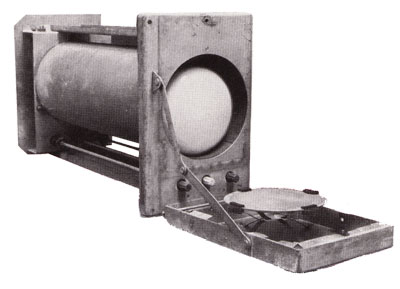
 |
Search | FAQ | US Titles | UK Titles | Memories | VaporWare | Digest | |||||||
| GuestBook | Classified | Chat | Products | Featured | Technical | Museum | ||||||||
| Downloads | Production | Fanfares | Music | Misc | Related | Contact | ||||||||
| CED in the History of Media Technology | ||||||||||||||

The first random access storage device for digital computers was actually the cathode ray tube. This was invented by Fred Williams at England's Manchester University in 1946 and was later used in the Manchester Mark I computer.
The device operated by writing a grid of dots and dashes (later dim and bright dots) to the CRT which were sensed by the collector plate that flips up directly over the CRT. Any binary word in the display could immediately be read, instead of having to be sequentially accessed.
During this same time frame in the U.S., RCA Laboratories inventor Jan Rajchman had another random access storage device under development called the Selectron Tube. This was a modified CRT where the electron beam struck a mica wafer into which a grid of nickel-plated steel eyelets was embedded. The eyelets were either charged or not charged by the electron beam to store binary data. The Selectron tube was a failure as manufacturing difficulties limited it to 256 bits of storage, compared to the 2048 bits for the Williams tube of that time. Rajchman went on to do research on core memory, which itself ultimately made the Williams tube obsolete.